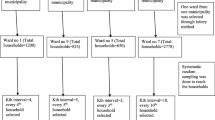Abstract
Natural disasters such as earthquakes, floods, avalanches, cyclone, tsunami, and landslides can be causation of voluminous destruction to life and property, which affect umpteen people. Disasters are feasible to cause the Posttraumatic disorders which could be short-term or may be long-term for someone. Experiencing a baleful natural disaster such as the recent earthquake that flogged Nepal, which has asserted more than 4500 lives and injured numerous, is nightmare for the victims, and its impact could be long lasting and tormenting. Therefore, it is essential to indulge the victims in the ways to mentally cope with the circumstance by adjuvant them with rapid repercussion, instructing them effective coping strategies and helping them to understand the disaster itself in the natural ways.
Study shows that people who have lost their amorous one and wealth are possibly to suffer from significant severe psychological disorders compared to those who have not. These sort of disorders not only affect the victims alone but it may develop a kind of mental disorder in the rescue workers, medical, and support teams.
The present study aims at knowing the redundancy of Posttraumatic Stress Disorder and Depression among the survivors in Nepal after the devastating earthquake.
Access this chapter
Tax calculation will be finalised at checkout
Purchases are for personal use only
Similar content being viewed by others
Bibliography
Basoglu, M., Kilic, C., Salcioglu, E., and Livanou, M. (2004). “Prevalence of Posttraumatic Stress Disorder and Comorbid Depression in Earthquake Survivors in Turkey: An Epidemiological Study”. Journal of Traumatic Stress 17: 133–141.
Behavioral Science Division, 1991. Acierno, R., Ruggiero K. J., Galea, S., Resnick, H. S., Koenen, K., et al. (2007). “Psychological Sequelae Resulting from the 2004 Florida Hurricanes: Implications for Postdisaster Intervention”. American Journal of Public Health 97: 103–108.
Blanchard, E. B., Jones-Alexander, J., Buckley, T. C., and Forneris, C. A. (1996). “Psychometric Properties of the PTSD Checklist (PCL)”. Behaviour Research and Therapy 34: 669–673.
Cardove, M. J., Andrykowski, M. A., Redd, W. H., Kenady, D. E., McGrath, P. C., and Sloan, D. A. (1995). “Frequency and Correlates of Posttraumatic Stress Disorder like Symptoms After Treatment for Breast Cancer”. Journal of Consulting and Clinical Psychology 63: 981–986.
David, D., Mellman, T. A., Mendoza, L. M., Kulick-Bell, R., Ironson, G., et al. (1996). “Psychiatric Morbidity Following Hurricane Andrew”. Journal of Traumatic Stress 9: 607–612.
Depression: Simple English Wikipedia https://simple.wikipedia.org/wiki/Depression_%28mental_illness%29.
Forbes, D., Creamer, M., and Biddle, D. (2001). “The Validity of the PTSD Checklist as a Measure of Symptomatic Change in Combat-Related PTSD”. Behavior Therapy and Research 39: 977–986.
Galea, S., Nandi, A., and Vlahov, D. (2005). “The Epidemiology of Post-traumatic Stress Disorder After Disasters”. Epidemiologic Reviews 27: 78–91.
Grant, D. M., Beck, J. G., Marques, L., Palyo, S. A., and Clapp, J. D. (2008). “The Structure of Distress Following Trauma: Posttrammatic Stress Disorder, Major Depressive Disorder, and Generalized Anxiety Disorder”. Journal of Abnormal Psychology 117: 662–672.
Green, B. L., Lindy, J. D., Grace, M. C., and Leonard, A. C. (1992). “Chronic Posttraumatic Stress Disorder and Diagnostic Comorbidity in a Disaster Sample”. Journal of Nervous and Mental Disease 180: 760–766.
Wilkins, Kendall C., Lang, Ariel J., and Norman, Sonya B. (2012). “Synthesis of the Psychometric Properties of the PTSD Checklist (PCL) Military, Civilian, and Specific Versions”. NCBI Journals Depress Anxiety. 2011 July; 28(7): 596–606.
Mental Health Worry for Nepalis Traumatised by Aftershocks: Report of Reuters (May 2015).
Need Assessment: Wikipedia https://en.wikipedia.org/wiki/Needs_assessment.
Neria, Y., Nandi, A., and Galea, S. (2007). “Post-traumatic Stress Disorder Following Disasters: A Systematic Review”. Psychological Medicine. Cambridge University Press, pp.1–14.
Nilamadhab, K., and Binaya, K. (2006). “Post-traumatic Stress Disorder, Depression and Generalised Anxiety Disorder in Adolescents After a Natural Disaster: A Study of Comorbidity”. Clinical Practice Epidemiology in Mental Health 2: 17.
Posttraumatic Stress Disorder: Wikipedia https://en.wikipedia.org/wiki/Posttraumatic_stress_disorder.
Sandro, G., Arijit, N., and David, V. (2005). “The Epidemiology of Post-traumatic Stress Disorder after Disasters”. Epidemiological Reviews, Oxford Journals 27 (1): 78–91.
Severity of Posttraumatic Stress Symptoms—Adult (National Stressful Events Survey PTSD Short Scale [NSESSS]).
Sharan, P., Chaudhary, G., Kavathekar, S. A., and Saxena, S. (1996). “Preliminary Report of Psychiatric Disorders in Survivors of a Severe Earthquake”. American Journal of Psychiatry 153: 556–558.
US Department of Veteran Affairs: National Center for PTSD, Traumatic Effects of Specific Types of Disasters.
Weathers, F. W., Huska, J. A., and Keane, T. M. PCL-S for DSM-IV. Boston: National Center for PTSD—PTSD CheckList—Civilian Version (PCL-S).
Weathers, F., Litz, B., Herman, D., Huska, J. A., and Keane, T. (1993). “The PTSD Checklist (PCL): Reliability, Validity, and Diagnostic Utility”. Paper Presented at the Annual Convention of the International Society for Traumatic Stress Studies.
Zung, William W. K. (1965). “ZUNG Self-rating Depression Scale”. Archives of General Psychiatry 12: 63–70.
Author information
Authors and Affiliations
Editor information
Editors and Affiliations
Rights and permissions
Copyright information
© 2019 The Author(s)
About this chapter
Cite this chapter
Zahir Ahmed, M. (2019). Posttraumatic Stress Disorder and Depression Among the Survivors of Nepal Earthquake: A Need Assessment Study. In: Zutshi, B., Ahmad, A., Srungarapati, A.B. (eds) Disaster Risk Reduction. Palgrave Macmillan, Singapore. https://doi.org/10.1007/978-981-10-8845-2_19
Download citation
DOI: https://doi.org/10.1007/978-981-10-8845-2_19
Published:
Publisher Name: Palgrave Macmillan, Singapore
Print ISBN: 978-981-10-8844-5
Online ISBN: 978-981-10-8845-2
eBook Packages: Social SciencesSocial Sciences (R0)




